Senior Design
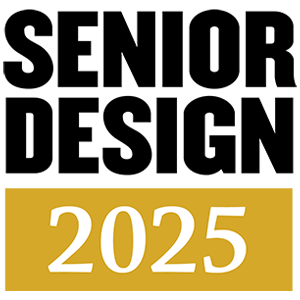 Senior Design provides PNW engineering students with supervised experience in the process and practice of engineering design.
Senior Design provides PNW engineering students with supervised experience in the process and practice of engineering design.
Students working in teams pursue an idea from conception to realistic design. The course concludes with the presentation of a substantial written report and a formal oral presentation.
Presentation Dates
All senior design presentations will take place on the Hammond Campus.
Poster Session
- Thursday, May 1
- 2 p.m. to 5 p.m.
- Student Union Library Building (SULB) Concourse
Oral Presentations
- Friday, May 2
- 8 a.m. to 11 a.m.
- Gyte 107 (MCE) and Gyte 103 (ECE)
Take a look at the teams and projects for the Spring 2025 semester:
- Concrete Canoe
- AISC Steel Bridge Competition
- Geowall Competition
- CFD Modeling of Oxygen Jet Impingement on Molten Steel during EAF Refining
- Design of Hydraulic Nozzle Spray Cooling in a Steel Continuous Caster
- Design of CFD Model for CO2 Mitigation in Ironmaking Processes
- Quantification of Supersonic Mixing
- Flow Optimization on Kanbara Reactors
- Building the Body of Shell Eco Marathon Electric Vehicle
- Continuous Research on Designing, Modeling and Testing a Small-Scale Archimedes Wind Turbine
- NASA Rover Human Exploration Challenge
- Hardware/Software Implementation and Evaluation of Lightweight Cryptography (LWC)
- Smiling Selfie
- Optimizing Solar Power Systems with Programmable Charge Controllers and AC Loads for Enhanced Efficiency
- Three Phase Motor Controller for the Shell Eco Car
- eVGrandPrix Competition
- Development of Hardware Controls for Use in Simulation Control
- Pick and Place Soldering Using a Robotic Arm
- PID Control Loop Stability and Efficiency Enhancements for Spin Bikes
- Cooperative Robotic System for Common Object with Vision and Tactile Feedback
- Design and Process Evaluation of Advanced Wastewater Treatment Processes for Nutrient Management
- Lease Support System & Risk Mitigation
- Mental Health Tracker
- Deep Learning for Pneumonia Diagnosis: A CNN-Based Approach
- PNW Campus Map Web Application
- Interactive 3D Render Web Site
- A WebGL Scene Graph Renderer
- Casino Project
- Exploring Performative Autonomy Strategies using POMDP
- LLMs for human-robot interaction
- The Data Mine for No Limit Living
- Developing Probability and Graph Algorithms on Mobile App for Enhancing Campus Safety
Concrete Canoe

Team Members
- Ben Ayon
- Andrew Muzquiz
- Krish Zalavadia
- Gregory Ramos
Project Advisors
- Subbarao Majety
- Chandra Chandramouli
Team Name
Concrete Conquerors
Team Slogan
Where there is water, there is a way
AISC Steel Bridge Competition

Team Members
- Tyler Bakker
- Hunter Reilly
- Dylan Barthel
- Ayyob Mustafa
- Eric Salazar
- Paul Holgerson
Project Advisor
- Subbarao Majety
- Chandra Chandramouli
- Kimia Mortezaei
Team Name
Connect Bridge Co.
Team Slogan
A Bridge Company You Can Trust
Geowall Competition

Team Members
- Jasmin Saric
- Joseph Wofford
Project Advisor
- Kimia Mortezaei
Team Name
SJ2 Soil & Water
Team Slogan
Keep It Steady
CFD Modeling of Oxygen Jet Impingement on Molten Steel during EAF Refining

Team Members
- AJ Togbe
- Jacob Shulman
Project Advisor
- Orlando Ugarte
- Tyamo Okosun
- Chenn Zhou
Team Name
J & A Solutions
Team Slogan
Optimizing electric arc furnace efficiency through precision CFD modeling
Design of Hydraulic Nozzle Spray Cooling in a Steel Continuous Caster

Team Members
- Luke Aune
- Elizabeth Cortes
- Lucas Dalla Costa
Project Advisor
- Armin Silaen
- Chenn Zhou
Team Name
Proper Cooling
Team Slogan
Stay Cool
Design of CFD Model for CO2 Mitigation in Ironmaking Processes

Team Members
- Gio Vazquez
- Julian Melendez
- Logan Smith
Project Advisors
- Samuel Nielson
- Tyamo Okosun
- Chenn Zhou
Team Name
JGL Ironmaking
Team Slogan
Smarter Steel, Cleaner Tomorrow
Quantification of Supersonic Mixing

Team Members
- Allan McAlpine
- Eli Wartman
Project Advisors
- Tom Liu
Team Name
Spectraflow Dynamics
Team Slogan
Innovation that Empowers Thrust
Flow Optimization on Kanbara Reactors

Team Members
- Madalyn Raudonis
- Caleb Davies
- Damarius Garlin
Project Advisor
- Chenn Zhou
Building the Body of Shell Eco Marathon Electric Vehicle
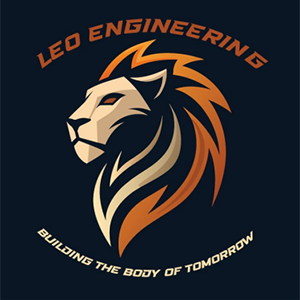
Team Members
- Jared Wozniak
- Josh McPherson
- Alessandro Proserpio
Project Advisors
- Hansung Kim
- Victor Gomez
Team Name
Leo Engineering
Team Slogan
Building the body of tomorrow
Continuous Research on Designing, Modeling and Testing a Small-Scale Archimedes Wind Turbine
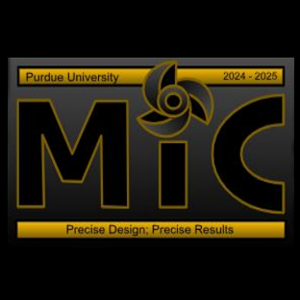
Team Members
- Connor Sheridan
- Michael Day
- Ian Perez
Project Advisor
- Xiuling Wang
Team Name
MiC
Team Slogan
Precise Design; Precise Results
NASA Rover Human Exploration Challenge

Team Members
- Mackenzie Haynes
- Madeline Kartz
- Neiman Graham
- Kyle Gregurich
Project Advisor
- Shengyong Zhang
Team Name
Herculeans
Team Slogan
Innovate, create and dominate!
Hardware/Software Implementation and Evaluation of Lightweight Cryptography (LWC)
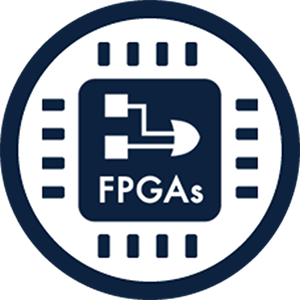
Team Members
- Andrew Tabaczynski
- Eric Carlson
Project Advisors
- Quamar Niyaz
Team Name
SecureSilicon
Team Slogan
Securing the Future
Smiling Selfie

Team Members
- Deandre Robertson
- Tommy Brady
Project Advisor
- Mohsen Saffari
Team Name
Happy Snapp AI
Team Slogan
Faces Identified, Memories Preserved
Optimizing Solar Power Systems with Programmable Charge Controllers and AC Loads for Enhanced Efficiency

Team Members
- Aayush Patel
- Benjamin Rutkowski
- Colin Wheeler
- Samuel Ayala
Faculty Mentor
- Arash Asrari
Team Name
SCAB Engineering
Team Slogan
Powering the Future, Today
Three Phase Motor Controller for the Shell Eco Car

Team Members
- Bernie Pranckus
- Luke Lopez
- Rebecca Johnson
Project Advisors
- Dave Kozel
Team Name
Eco Drive Motors
Team Slogan
Engineered for eco, driven by innovation
eVGrandPrix Competition

Team Members
- Alex Macedo
- Jesus Gonzalez
- Kevin Castaneda
- Quoc Nguyen
Project Advisors
- Khair Al Shamaileh
- Dave Kozel
- Lizhe Tan
Development of Hardware Controls for Use in Simulation Control
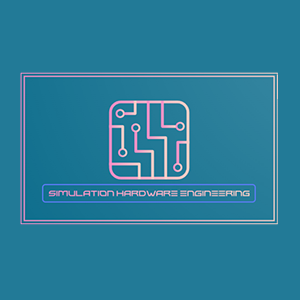
Team Members
- Fengyuan Liu
- Mariano Gallegos
- Yirui Shen
Project Advisors
- Kyle Toth
- Chenn Zhou
Team Name
Simulation Hardware Engineering
Team Slogan
We are Simulation Hardware Engineering and we will simulate the future
Pick and Place Soldering Using a Robotic Arm

Team Members
- Riley Gawronski
- Sean Dennehe
- Joshua Grady
Project Advisors
- Lizhe Tan
PID Control Loop Stability and Efficiency Enhancements for Spin Bikes
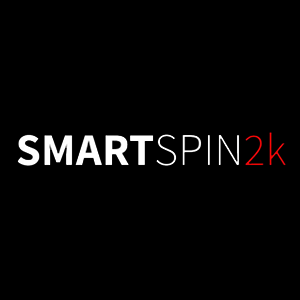
Team Members
- Ben Villavicencio
- Dejan Tomic
Project Advisors
- Anthony Doud
Team Name
SmartSpin2k
Team Slogan
Transform your spin bike into a smart trainer
Cooperative Robotic System for Common Object with Vision and Tactile Feedback

Team Members
- Ayham Zahabi
- Jared Wroble
- Josue Moreno
Project Advisors
- Lizhe Tan
Team Name
TactiVision Robotics
Team Slogan
Precision in every sense
Design and Process Evaluation of Advanced Wastewater Treatment Processes for Nutrient Management

Team Members
- Gian Abangan
- Wenqi Wang
Project Advisors
- Veera Gude
Team Name
W3 Environmental
Team Slogan
Engineering to the Power of Water
Lease Support System and Risk Mitigation

Team Members
- Ryan Walkowiak
- Lazar Stanisavljevic
- Nina Parra
Project Advisors
- Shuhui Yang
Mental Health Tracker

Team Members
- Alyssa Gargano
- Daylen Yisra’el
Project Advisors
- Hairong Zhao
Deep Learning for Pneumonia Diagnosis: A CNN-Based Approach

Team Members
- Justin Brent
Project Advisors
- Hairong Zhao
PNW Campus Map Web Application

Team Members
- Peter Bizoukas
Project Advisors
- Roger Kraft
Interactive 3D Render Web Site

Team Members
- Bradley Brenning
Project Advisors
- Roger Kraft
A WebGL Scene Graph Renderer

Team Members
- Daniel Chimitt
Project Advisors
- Roger Kraft
Casino Project

Team Members
- Ty Doepping
- Masson Elizondo
Project Advisors
- Roger Kraft
Exploring Performative Autonomy Strategies using POMDP

Team Members
- Jesse Olufemi Awofadeju
- Julian Alexi Sahagun
Project Advisors
- Sayanti Roy
LLMs for human-robot interaction

Team Members
- Harris Hussain
Project Advisors
- Sayanti Roy
The Data Mine for No Limit Living

Team Members
- Nicholas J. Lachcik
- Wesley David Roe
Project Advisors
- Ruijian Zhang
Developing Probability and Graph Algorithms on Mobile App for Enhancing Campus Safety

Team Members
- Alexander Matthew Wheeler
- William Peter Wojtyska IV
Project Advisors
- Wei Dai